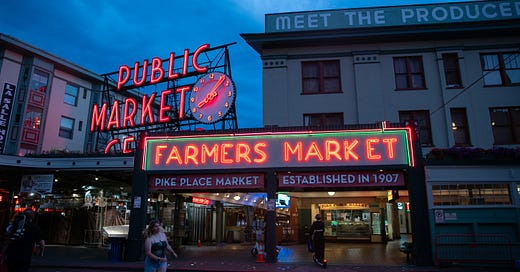When Nothing Mattered and Everything Changed
Trade wars erupted, GDP shrank, a socialist won New York, and the stock market broke records. Not despite the chaos. But because it no longer sees it.
Last quarter was a mess. The U.S. slapped tariffs on Asian imports during something called Liberation Day. Canada retaliated. China followed. Two separate trade wars broke out. GDP went negative. A new war ignited in the Middle East.
Meanwhile, the stock market hit all-time highs.
And in New York City, a democratic socialist named Zohran Mamdani won the mayoral primary — toppling a political dynasty and becoming the most visible face of the American left since Bernie Sanders.
So in the span of a few weeks, we saw economic contraction, geopolitical escalation, and a socialist surge in the nation’s largest city — all while investors cheered like it was 1999.
We used to believe that markets reflected reality. That if a war broke out, if GDP shrank, if trade routes were disrupted, there would be consequences. That risk had gravity. That price had memory. That numbers meant something.
Now, the worse things get, the higher the markets go.
It’s not just irrational exuberance. It’s a structural divorce. The economy is bleeding under the floorboards, and upstairs, the party keeps getting louder. The drift isn’t just between fundamentals and valuations. It’s between experience and narrative.
Start with the tariffs. On “Liberation Day,” the administration slapped punitive duties on dozens of imports from Asia. The gesture was symbolic, nationalistic, and economically incoherent. Within hours, Canada retaliated. China followed. Trade volumes dipped. Supply chains buckled. Small manufacturers laid people off.
None of it touched the markets.
Then came the war. Again. In the Middle East. Energy corridors disrupted. Military spending spiked. Strategic reserves drawn down. Civilian casualties climbed. But so did the S&P.
Meanwhile, GDP came in negative. Consumer sentiment hit a five-year low. Regional banks showed signs of stress. Still: green across the board. The Dow flirted with 40,000. Tech rallied on “AI optimism.”
Why?
Because the market isn’t tethered to the real economy. It’s propped up by liquidity, incentives, and engineered narratives. Buybacks are back. The Fed’s tightening was priced in before it happened. Index funds are on autopilot. And institutional capital is too big to sit out.
It’s not that the market is dumb. It’s that it no longer needs to be right.
The illusion of performance has replaced the substance of resilience. You don’t need growth, peace, or productivity. You just need confidence. Or the illusion of it.
If the market goes up during war, during contraction, during chaos, what is it even measuring?
Not health. Not strength.
It’s measuring where capital feels safest. And that’s not the same as where society is doing well.
We’ve created a financial system that rewards momentum, not meaning. That punishes caution, not recklessness. That sees conflict as stimulus and decline as arbitrage.
So when people say “the market is not the economy,” it’s not just a technical distinction. It’s an indictment.
Don’t take comfort in the green arrows.
Ask what they’re masking.
What we saw this quarter wasn’t resilience. It was detachment.
The system is performing as designed. But it no longer performs what it claims to measure.
And when signals break, when success is untethered from conditions, the real risk isn’t volatility.
It’s delusion.





